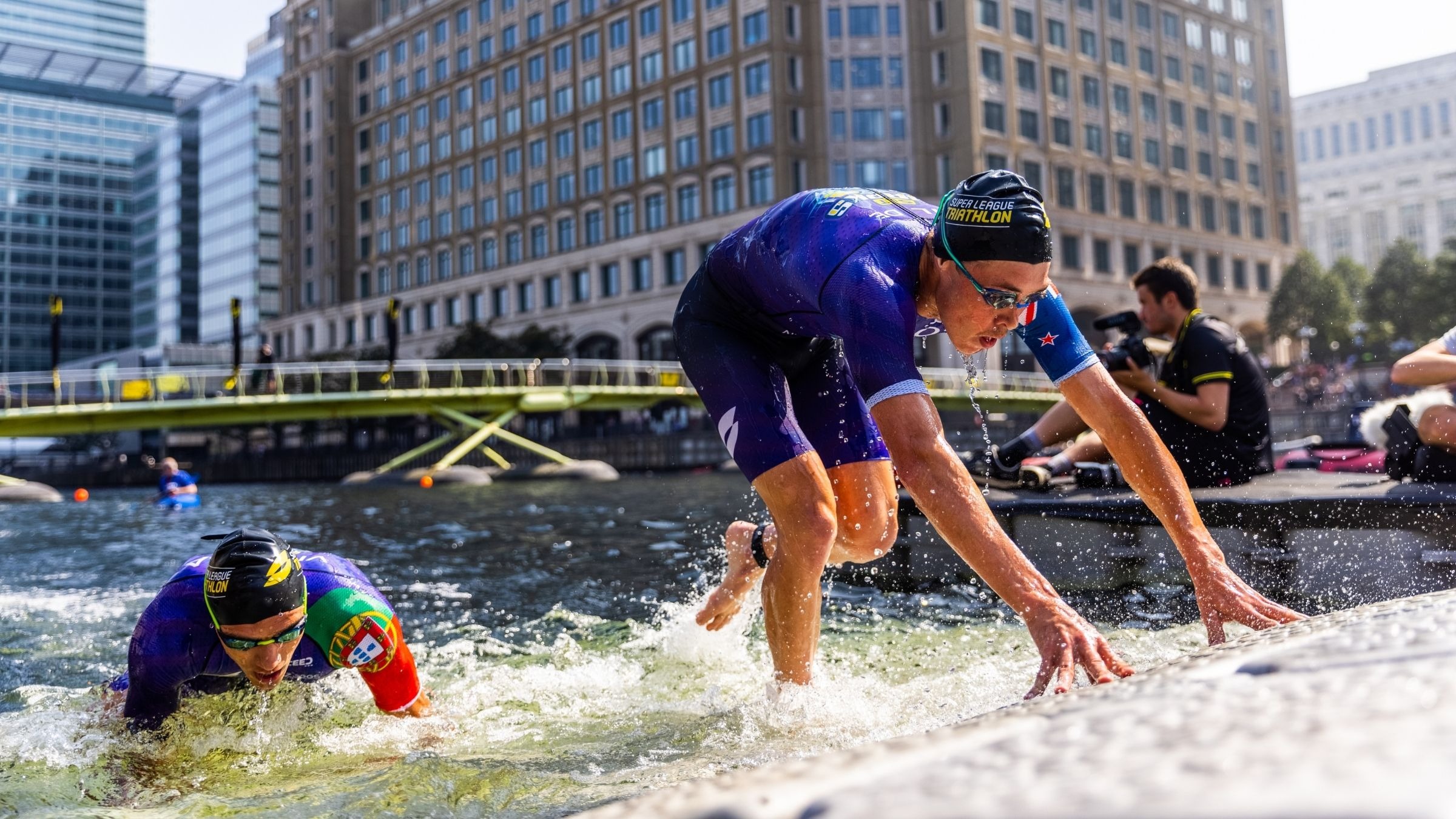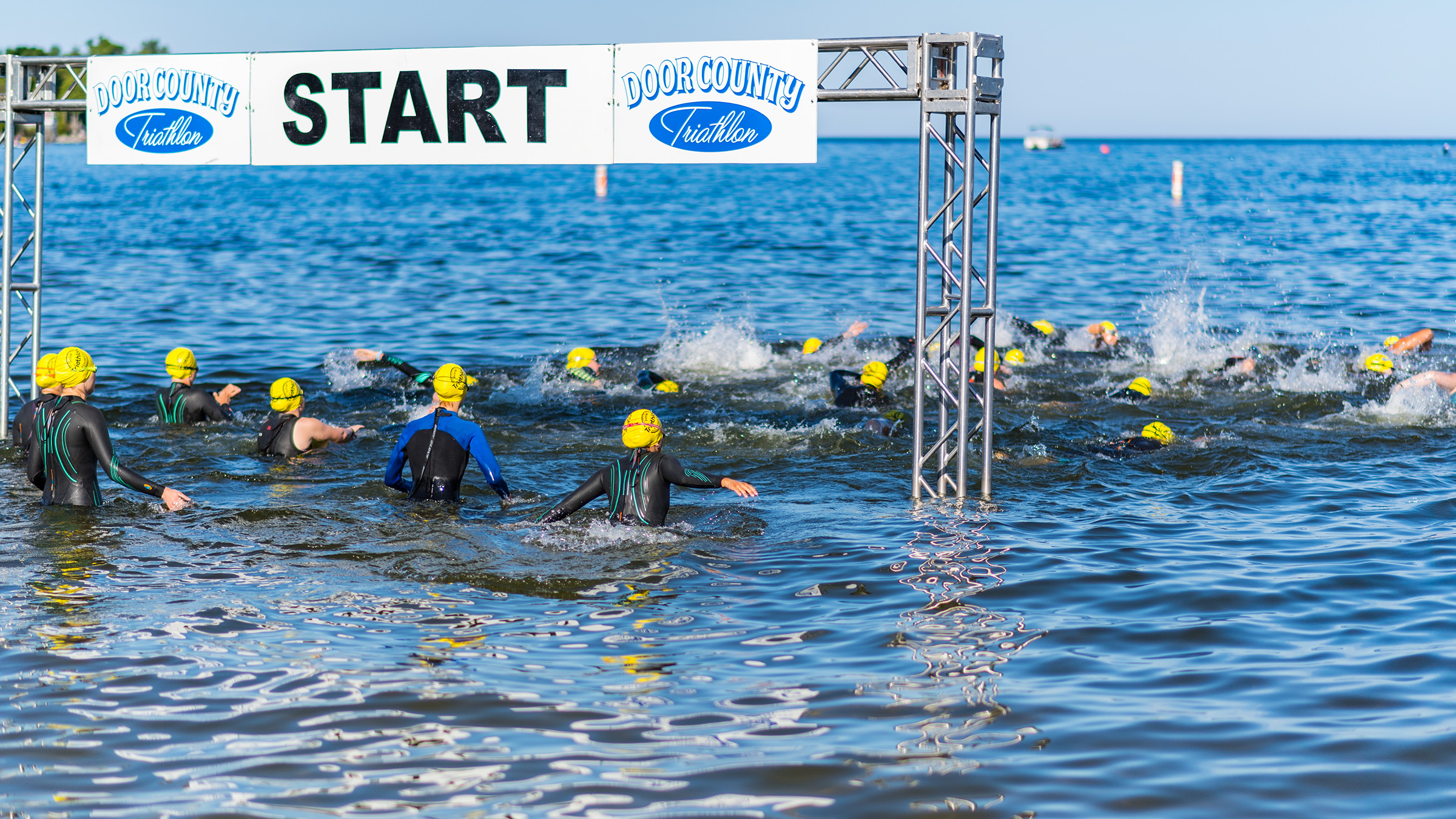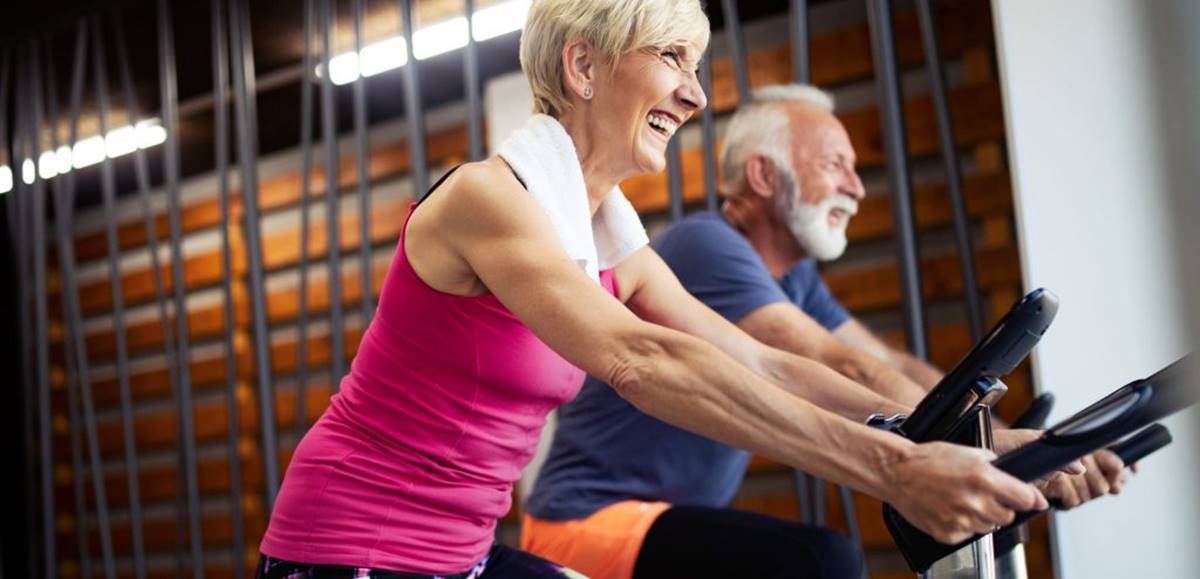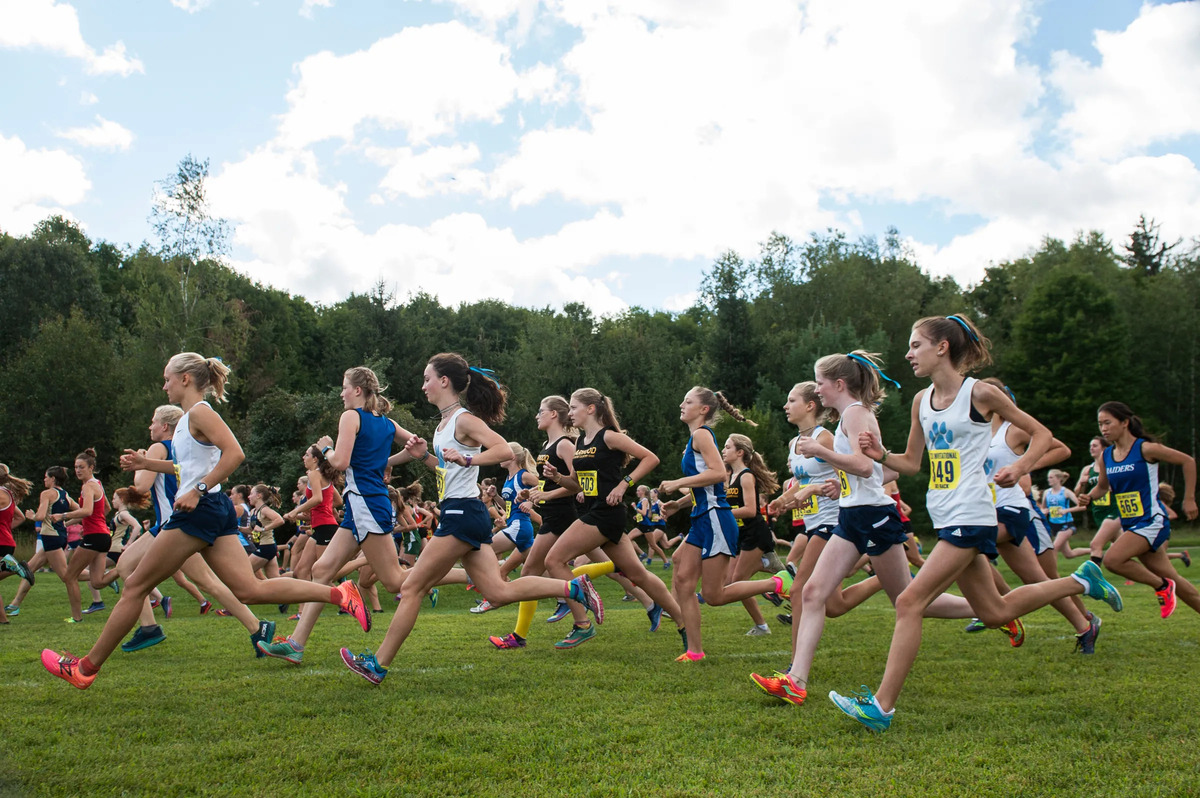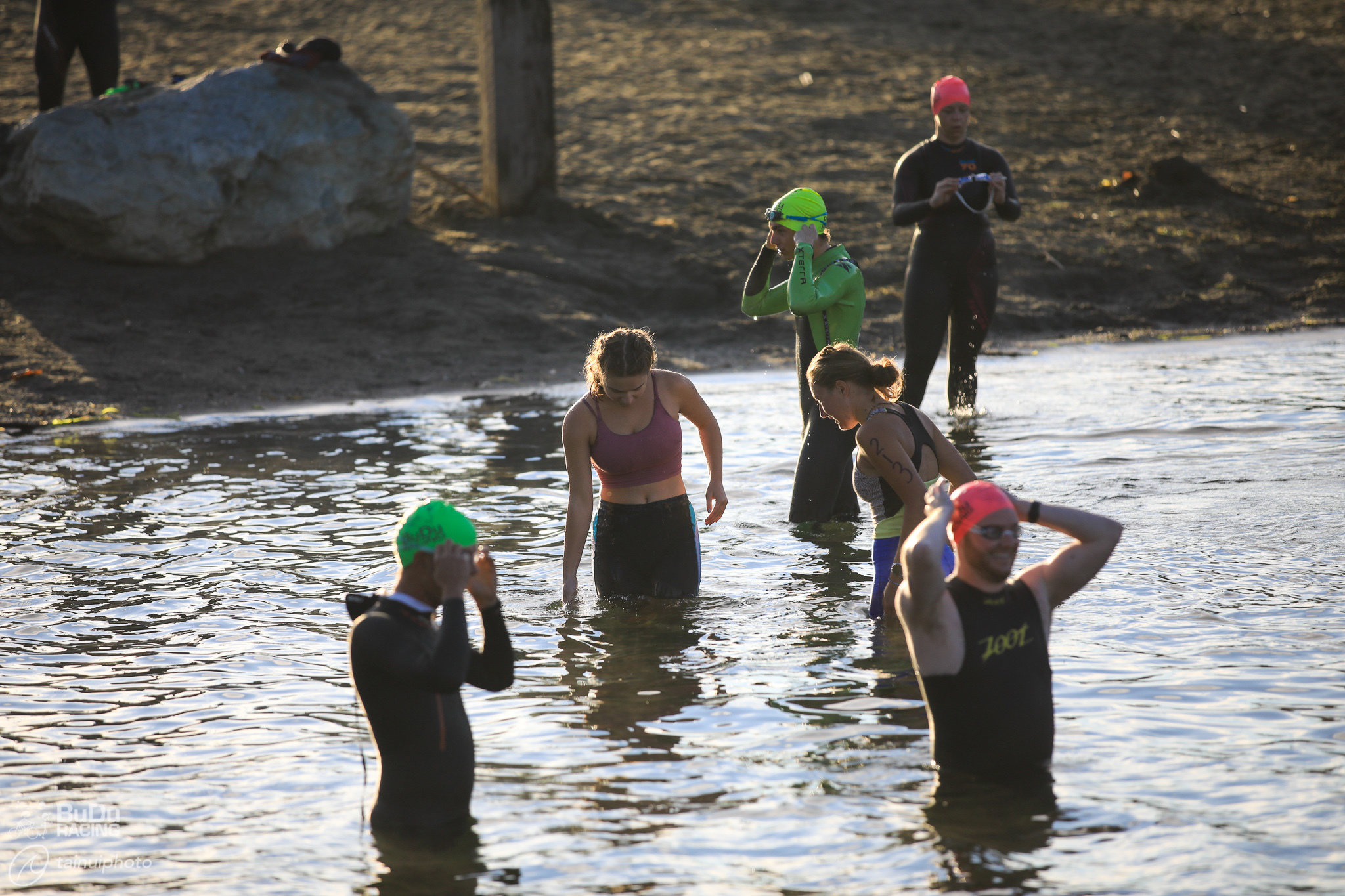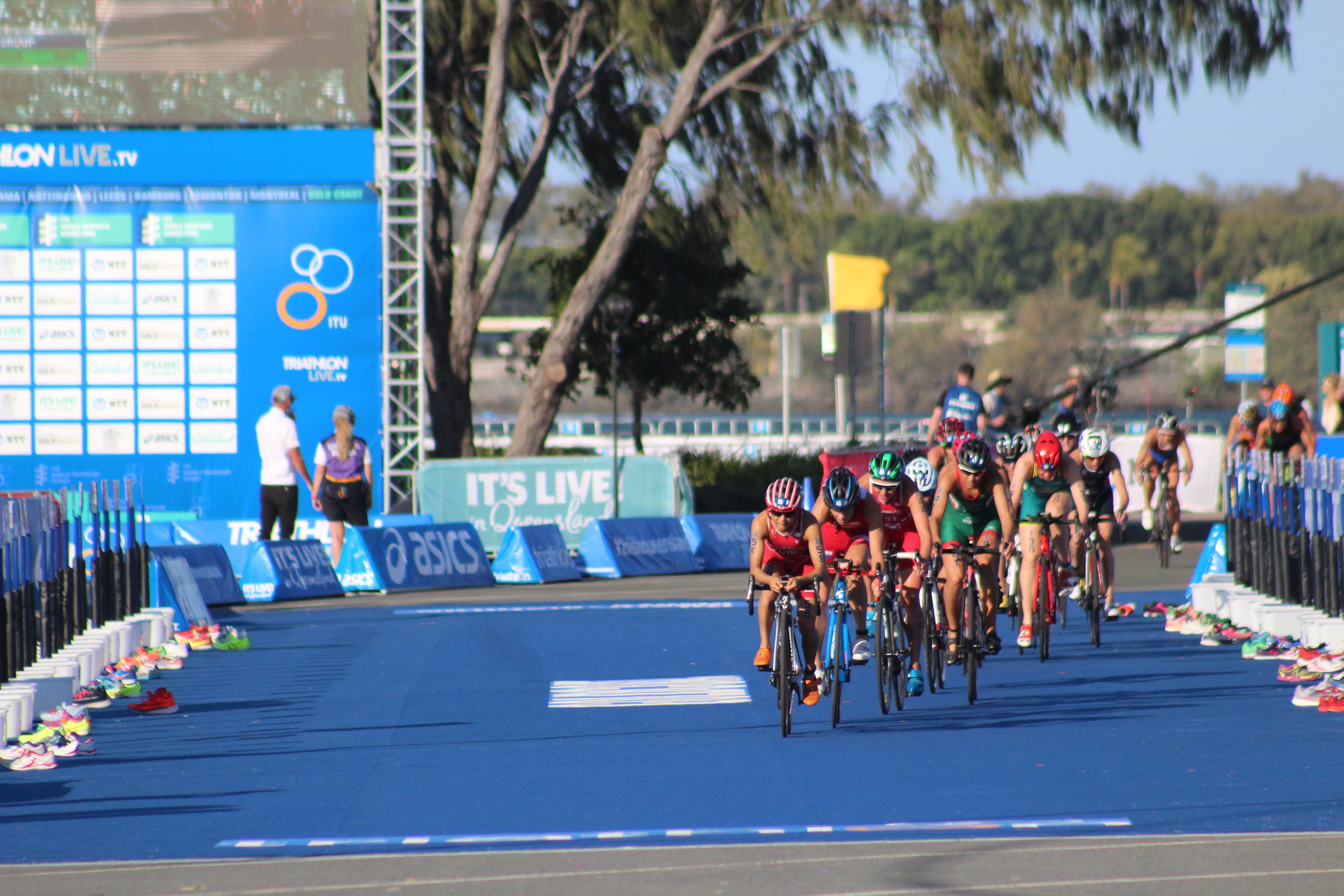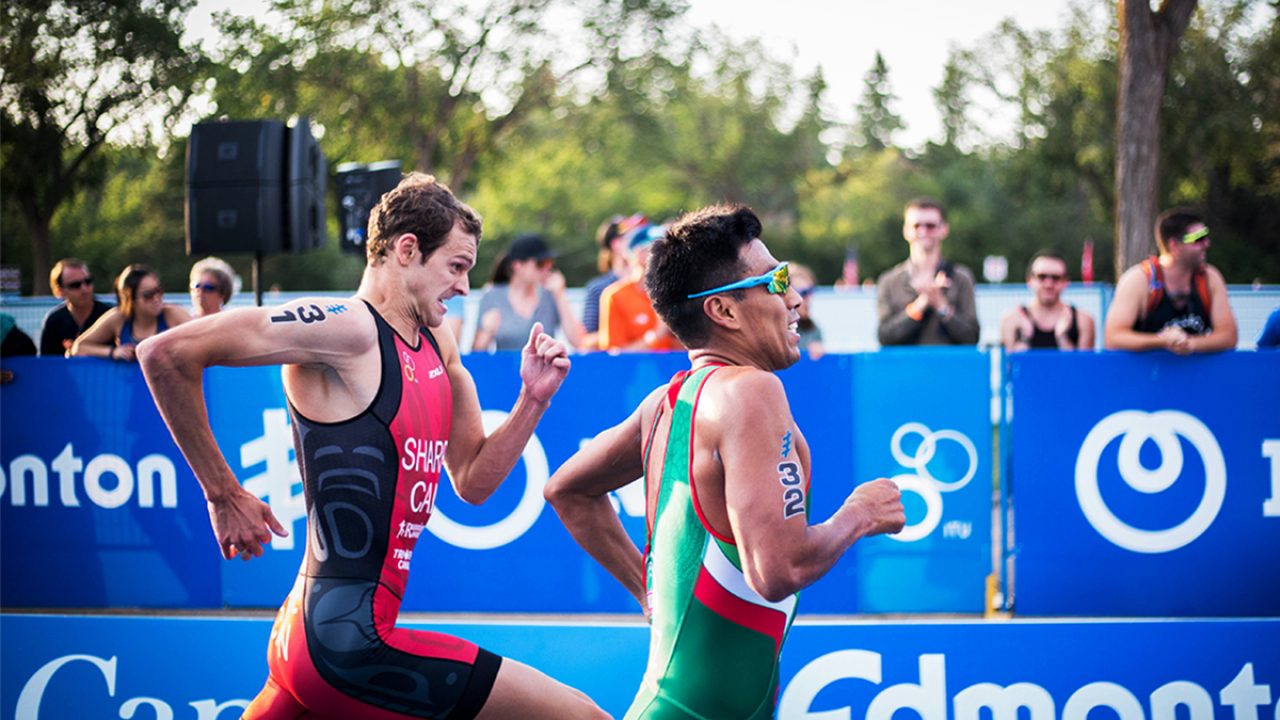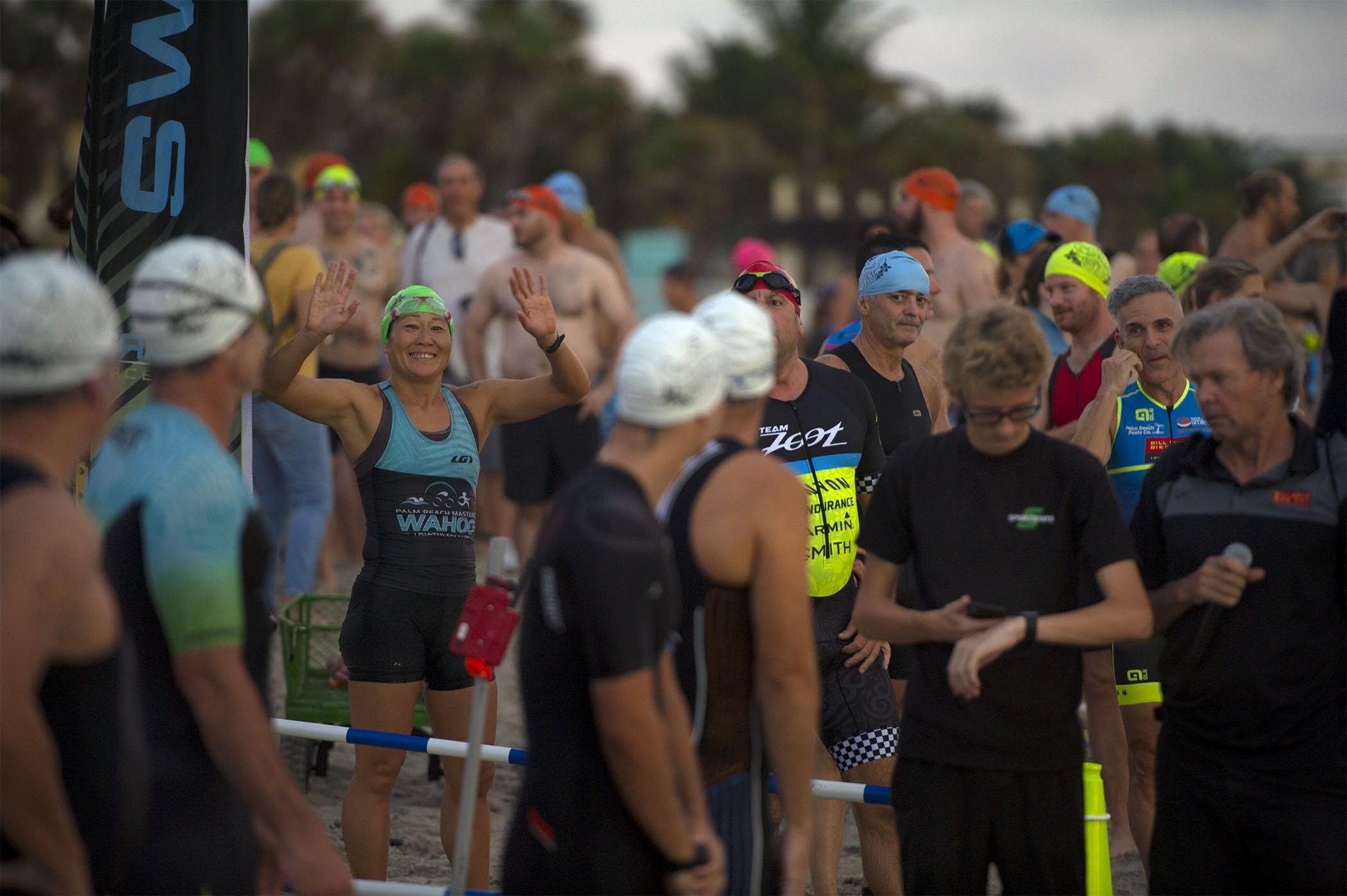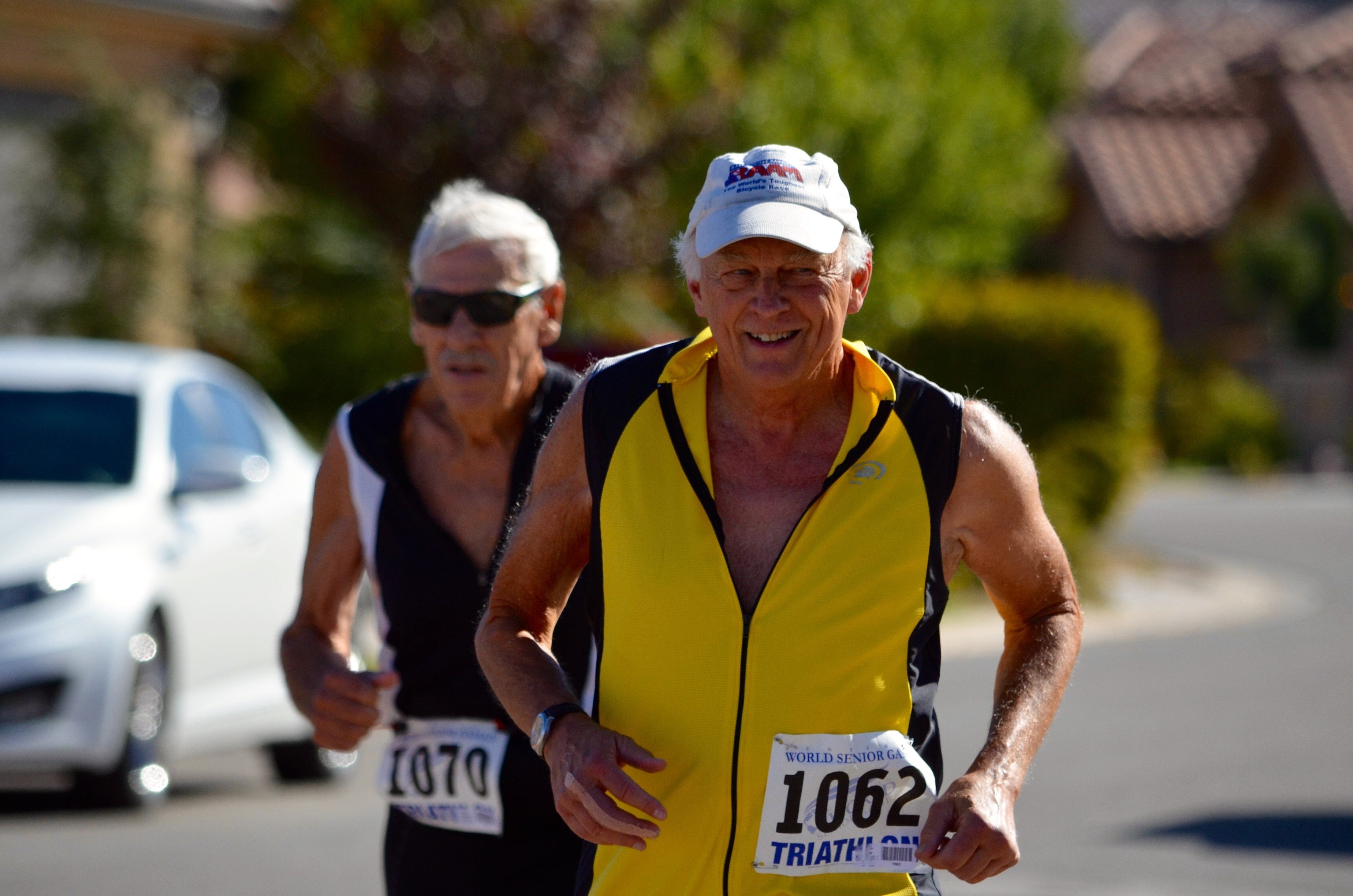

Featured
What Events Are In A Senior Triathlon
Modified: January 2, 2024
Participate in the featured senior triathlon event and showcase your athleticism. Join us for a thrilling competition tailored for older adults.
Introduction
Participating in a senior triathlon is an exciting and rewarding experience for older adults who enjoy staying active and challenging themselves physically. These events offer a unique opportunity to compete in three different disciplines – swimming, cycling, and running – in a friendly and supportive environment.
The senior triathlon is a popular sporting event that brings together individuals of all fitness levels, from beginners to seasoned athletes. It showcases the incredible determination, skill, and endurance of the participants, proving that age is not a barrier to staying fit and engaging in competitive sports.
Unlike traditional triathlons, which are often associated with intense competition and elite athletes, senior triathlons focus on inclusivity and personal achievement. They provide a platform for older adults to showcase their abilities and push their physical limits, all while fostering a sense of camaraderie and community.
Whether you are a seasoned triathlete or new to the sport, participating in a senior triathlon can be a transformative experience. It offers a chance to set and achieve personal goals, boost self-confidence, and discover the joy of staying active and healthy in your senior years.
In this article, we will explore the different events that are typically included in a senior triathlon, ranging from swimming to cycling and running. We will also discuss the importance of transition areas, equipment requirements, and the rules and regulations that govern these competitions. Finally, we will provide some valuable training tips to help you prepare for your senior triathlon.
Swimming Events
The swimming portion is the first event in a senior triathlon and usually takes place in a pool or open water. It is important to note that the specific distances for each event may vary depending on the triathlon, but it typically involves swimming a set distance, often ranging from 200 meters to 1.5 kilometers.
For participants who are not strong swimmers, there is usually an option to use assistive devices such as kickboards or pool noodles to help maintain buoyancy and support during the swim. This ensures that everyone can participate regardless of their swimming ability.
Swimming in a senior triathlon requires not only physical strength but also proper technique and endurance. It is essential to practice proper breathing patterns and stroke mechanics to maximize efficiency and conserve energy throughout the swim. Coaches and trainers can provide valuable guidance to improve your swimming skills and build confidence in the water.
Safety is a priority during swimming events, and lifeguards or safety boats are often present to ensure the well-being of all participants. Additionally, wearing bright-colored swimming caps provided by the event organizers helps in identifying swimmers in the water and enhances overall safety measures.
Participating in the swimming event requires some degree of open water or pool swimming experience. It is advisable to train in similar conditions leading up to the competition to become familiar with different water environments. Open water swimming may present additional challenges such as currents, waves, or visibility issues. Hence, training in open water can help develop the necessary skills to navigate and remain calm in such conditions.
Overall, the swimming event in a senior triathlon provides a unique opportunity to embrace the water and showcase your aquatic abilities. It can be a test of strength, technique, and mental fortitude. By incorporating regular swimming workouts into your training regimen and working on your stroke efficiency, you can excel in this event and set the tone for the rest of the triathlon.
Cycling Events
Cycling is the second event in a senior triathlon and is often considered one of the most enjoyable and exhilarating parts of the competition. Participants showcase their speed, endurance, and cycling skills as they navigate through a designated course, which can vary in distance depending on the triathlon.
Senior triathlon cycling events can take place on roads, trails, or a combination of both. The course may include challenging terrains, such as hills or descents, to test the participants’ strength and handling abilities. It is important to familiarize yourself with the course layout to plan your strategy accordingly.
When it comes to equipment, a well-maintained and properly fitted road or hybrid bike is crucial for optimal performance. Investing in a quality bike and ensuring it is regularly serviced will enhance your cycling experience and reduce the risk of mechanical issues during the race. Don’t forget to wear a well-fitting helmet, as safety is paramount in any cycling event.
The cycling portion of a senior triathlon is a great opportunity to showcase your endurance and pedaling technique. To improve your cycling performance, incorporate interval training, hill repeats, and long-distance rides into your training regimen. This will help build both strength and endurance, enabling you to tackle the varied terrains encountered during the race.
During the cycling event, it’s essential to maintain focus, stay aware of your surroundings, and adhere to the traffic rules. Observe proper hand signaling, communicate with other cyclists, and be mindful of any potential hazards. The event organizers typically implement safety measures, such as volunteering marshals or marking the course to ensure a smooth and secure cycling experience.
Remember to pace yourself during the cycling event, especially if it’s a long-distance race. Finding a comfortable rhythm and being mindful of your energy reserves will help you maintain a steady and efficient pace throughout the course. Consider practicing nutrition and hydration strategies during your training rides to ensure you fuel your body adequately both before and during the event.
Cycling in a senior triathlon is not just about speed; it’s an opportunity to enjoy the thrill of riding a bike and pushing your boundaries. Embrace the freedom of the open road or the beauty of nature on a trail as you embark on this leg of the triathlon, and remember to take in the scenery and celebrate your achievements along the way.
Running Events
The running portion is the final event in a senior triathlon and is often the most challenging due to the accumulated fatigue from swimming and cycling. It requires mental strength, endurance, and proper pacing to complete the designated distance and cross the finish line triumphantly.
The running course in a senior triathlon can vary in distance, typically ranging from 5 kilometers to 10 kilometers, depending on the event. It can take place on roads, trails, or a combination of both, providing a diverse and stimulating experience for participants.
When it comes to running in a triathlon, choosing the right footwear is crucial. Invest in a good pair of running shoes that provide comfort, support, and proper cushioning to minimize the risk of injuries. It is recommended to have your shoes fitted by a professional to ensure the correct size and fit.
During the run, focus on maintaining a steady pace that allows you to push through any fatigue while still being able to finish strong. Pacing strategies such as negative splits, where you gradually increase your speed throughout the race, can help optimize your performance and prevent burnout early on.
Hydration and nutrition should not be overlooked during the running event. Adequate fluid intake and consuming energy-boosting snacks before and during the race can help sustain your energy levels and prevent dehydration. It is advisable to practice your hydration and nutrition strategies during your training runs to find what works best for you.
Endurance and mental resilience play a significant role in the running event. It is common to experience moments of doubt or fatigue, especially towards the latter stages of the triathlon. By maintaining a positive mindset, focusing on your progress, and drawing strength from your training, you can overcome any challenges and push through to the finish line.
Running in a senior triathlon celebrates the joy and accomplishment of crossing the final threshold. Cherish the feeling of exhilaration as you sprint towards the finish, knowing that you have conquered the swimming, cycling, and running disciplines. Take pride in the progress you have made, the obstacles you have overcome, and the goals you have achieved.
Completing the running event signifies the completion of the senior triathlon, leaving you with a sense of accomplishment and fulfillment. It is an opportunity to reflect on your journey, whether it’s your first triathlon or one of many, and appreciate the physical and mental strength you possess.
Transition Areas
The transition areas in a senior triathlon are where participants switch between the different disciplines – swimming, cycling, and running. These areas serve as crucial transition zones where athletes prepare themselves and make the necessary gear adjustments to smoothly transition from one activity to the next.
There are typically two transition areas: one for the transition from swimming to cycling (T1) and another for the transition from cycling to running (T2). These areas are strategically placed to facilitate a seamless flow of the race and minimize the time spent in transition.
In the T1 area, participants who have completed the swimming event make their way out of the water and head towards their designated bike racks. It is essential to have a clear understanding of the layout and location of your bike to save time during the transition. Organize your gear in a logical and easily accessible manner to ensure a quick and efficient transition.
When transitioning from the swim to the bike, it is crucial to dry off, put on any necessary cycling gear such as helmets, shoes, and jerseys, and remove any excess water or sand from your body. A towel placed near your bike can be used to dry off and wipe your feet before putting on your cycling shoes.
The T2 area is where participants transition from the cycling to the running leg of the triathlon. As you approach the T2 area, dismount your bike and carefully rack it in your designated spot. Take a moment to steady yourself and transition from cycling shoes to running shoes. Ensure your laces are securely tied and any necessary running gear is in place.
In both transition areas, it is essential to be mindful of your surroundings and respect the space of other participants. Be efficient in your movements while maintaining a courteous demeanor to create a positive and inclusive race environment.
Practice is key when it comes to mastering transition times. Set up mock transitions during your training sessions to simulate the actual race scenario. This will help you familiarize yourself with the process and identify any areas for improvement or time-saving strategies.
Remember to stay calm and composed during transitions. Although every second counts, rushing can lead to mistakes or misplaced items, costing you more time in the long run. Take a moment to breathe, focus on the task at hand, and smoothly transition from one discipline to the next.
The transition areas in a senior triathlon not only serve a practical purpose but also enhance the overall race experience. They symbolize the fluidity and adaptability of triathlon participants as they seamlessly switch between activities, highlighting their versatility and determination to conquer all challenges that come their way.
Equipment Requirements
Participating in a senior triathlon requires specific equipment to ensure a safe and enjoyable experience. While the exact requirements may vary between different events and organizations, there are some common essentials that every participant should consider.
1. Swim Gear: A well-fitting swimsuit or triathlon wetsuit is essential for the swimming portion of the triathlon. Goggles are also necessary to protect your eyes and improve visibility in the water. Some events may provide swim caps, but it’s always a good idea to have your own brightly colored cap for enhanced visibility.
2. Bike: A reliable and properly maintained bike is a crucial component of the triathlon. Road bikes, triathlon bikes, or even hybrid bikes are commonly used. Ensure that your bike is in good working condition, with functional brakes, gears, and tires. Accessorize your bike with lights, reflectors, and a water bottle cage for added safety and convenience.
3. Cycling Gear: A well-fitting helmet is an absolute must to protect your head in case of a fall or collision. Cycling shoes with cleats, if using clipless pedals, can improve power transfer and efficiency. Don’t forget to wear comfortable and breathable cycling attire, such as padded shorts, jerseys, and gloves.
4. Running Gear: Invest in a good pair of running shoes that provide adequate support, cushioning, and stability. It’s important to choose shoes that are appropriate for your specific foot type and running style. Wear moisture-wicking socks and comfortable running attire to ensure maximum comfort and minimize the risk of blisters and chafing.
5. Transition Essentials: In addition to the sport-specific gear, there are a few transition essentials to consider. These include a towel to dry off and wipe your feet before cycling or running, sunscreen to protect your skin from the sun’s harmful rays, and a small bag or backpack to store all your necessary items together.
6. Nutrition and Hydration: Proper fueling and hydration are crucial in a triathlon. Carry energy gels, bars, or electrolyte drinks to replenish your energy stores during the race. Consider using a hydration pack or a water bottle mounted on your bike for easy access to fluids.
It’s important to note that the rules and requirements regarding equipment may differ depending on the specific race and governing organizations. Therefore, it’s advisable to review the event’s guidelines and regulations to ensure compliance with the equipment requirements.
Remember, investing in quality equipment and ensuring its proper maintenance not only enhances your performance but also ensures your safety during the race. Take the time to familiarize yourself with the gear, practice transitions, and make any necessary adjustments to optimize your overall triathlon experience.
Rules and Regulations
Every senior triathlon has a set of rules and regulations that participants must adhere to in order to ensure fair play, safety, and the overall success of the event. Familiarizing yourself with these rules is essential for a smooth and enjoyable race experience.
1. Age Categories: Senior triathlons are typically divided into different age categories, with participants competing against others in their respective age groups. These categories allow for fair competition and recognition of accomplishments within specific age ranges.
2. Course Markings: To ensure that participants stay on the designated course, race organizers often mark the route with appropriate signage, arrows, or cones. It’s important to follow these markers and stay within the designated route to avoid disqualification and maintain a level playing field.
3. Drafting Rules: In some senior triathlons, drafting (riding closely behind another cyclist to reduce wind resistance) may be prohibited. Participants are typically required to maintain a certain distance, known as the drafting zone, between themselves and the cyclist in front of them. Familiarize yourself with the drafting rules specific to the race you are participating in to avoid penalties.
4. Time Limits: Most senior triathlons impose time limits for each leg of the race and the overall completion. These limits are put in place to ensure the safety of participants and efficient management of the event. It is crucial to be aware of these time limits and pace yourself accordingly to successfully finish within the allotted time.
5. Mandatory Equipment: While the equipment requirements were discussed earlier, some triathlons may have additional mandatory equipment such as a whistle, reflective gear, or a bike bell. It is important to review the event-specific rules to ensure you have all the required equipment before starting the race.
6. Rule Violations and Penalties: Violations of the rules may result in penalties, time additions, or disqualification. Common rule violations include obstructing other participants, littering, unauthorized assistance, or unsporting behavior. It is essential to familiarize yourself with the specific penalties and consequences outlined by the race organizers.
7. Safety Measures: Senior triathlons prioritize the safety of participants. Race organizers typically provide safety measures such as lifeguards during the swim and volunteers or marshals stationed along the course to ensure everyone’s well-being. It is essential to follow the instructions of these safety personnel and be aware of any emergency procedures.
Remember, the rules and regulations are in place to maintain fairness, safety, and the overall integrity of the senior triathlon. Abiding by these guidelines not only promotes a positive race experience but also showcases your dedication and respect for the sport and fellow participants.
Training Tips
Training for a senior triathlon requires a well-structured and balanced approach to build strength, endurance, and skill in all three disciplines. Here are some valuable training tips to help you prepare for a successful race:
1. Start with a Plan: Develop a training plan that includes specific goals, training days, and workouts for each discipline. Incorporate both structured workouts and rest days to allow for adequate recovery and prevent overtraining.
2. Gradual Progression: Gradually increase the duration and intensity of your workouts over time. Gradual progression helps prevent injuries and allows your body to adapt to the increased demands of the training.
3. Sport-Specific Training: Dedicate specific training sessions to each discipline – swimming, cycling, and running. Focus on improving technique, speed, and endurance in each discipline individually to optimize your performance in the triathlon.
4. Brick Workouts: Incorporate brick workouts into your training routine. A brick workout is a training session where you combine two disciplines back-to-back, such as a swim immediately followed by a bike or a bike immediately followed by a run. This helps your body adjust to the transitions between activities.
5. Cross-Training: Include cross-training activities such as strength training, yoga, or Pilates to improve overall fitness, muscular strength, and flexibility. These activities can enhance your performance and reduce the risk of injuries.
6. Practice Transitions: Perform mock transitions during your training sessions to familiarize yourself with the process and optimize the time spent in the transition areas. Include quick changeovers between activities to simulate race-day conditions.
7. Nutrition and Hydration: Pay attention to proper nutrition and hydration during your training. Fuel your body with balanced meals, incorporate healthy snacks, and stay well-hydrated to support your energy levels and aid in recovery.
8. Mental Preparation: Develop mental resilience and prepare yourself mentally for the challenges of the triathlon. Engage in visualization techniques, positive self-talk, and goal-setting to stay motivated and focused during training and on race day.
9. Seek Professional Guidance: If you’re new to triathlon or want to take your training to the next level, consider seeking guidance from a certified coach or joining a training group. They can provide personalized training plans, advice, and support throughout your triathlon journey.
10. Listen to Your Body: Pay attention to your body’s signals and adjust your training as needed. Rest when necessary, address any discomfort or pain promptly, and prioritize recovery to prevent overuse injuries.
Remember, consistency and dedication are key to successful triathlon training. Slow and steady progress, coupled with smart training techniques, will help you build the fitness and confidence needed to excel in your senior triathlon.
Conclusion
Participating in a senior triathlon is an incredible opportunity for older adults to challenge themselves physically, showcase their abilities, and experience the joy of competing in three different disciplines – swimming, cycling, and running. These events promote inclusivity, camaraderie, and personal achievement, proving that age is not a barrier to staying fit and active.
From the swimming events that test strength and technique in the water, to the exhilarating cycling events that allow participants to showcase endurance and speed, and finally the running events that require mental resilience and pacing skills, each discipline in a senior triathlon offers unique challenges and rewards.
The transition areas play a vital role in ensuring smooth transitions between the disciplines, while proper equipment and adherence to rules and regulations contribute to the safety and fairness of the event.
Training is a crucial aspect of preparing for a senior triathlon, involving sport-specific workouts, gradual progression, cross-training, and mental preparation. Following a well-structured training plan, seeking professional guidance, and listening to your body are key to achieving optimal performance on race day.
Participating in a senior triathlon is not only about the competition but also about personal growth, self-belief, and embracing a healthy and active lifestyle. It is an opportunity to challenge yourself, set and achieve goals, and inspire others with your determination and dedication.
Whether you are a seasoned triathlete or new to the sport, the journey towards a senior triathlon is filled with excitement, obstacles, and triumphs. Embrace the experience, celebrate your accomplishments, and cherish the memories created along the way.
So, lace up your running shoes, grab your goggles, and hop on your bike – the world of senior triathlons awaits you with open arms!

